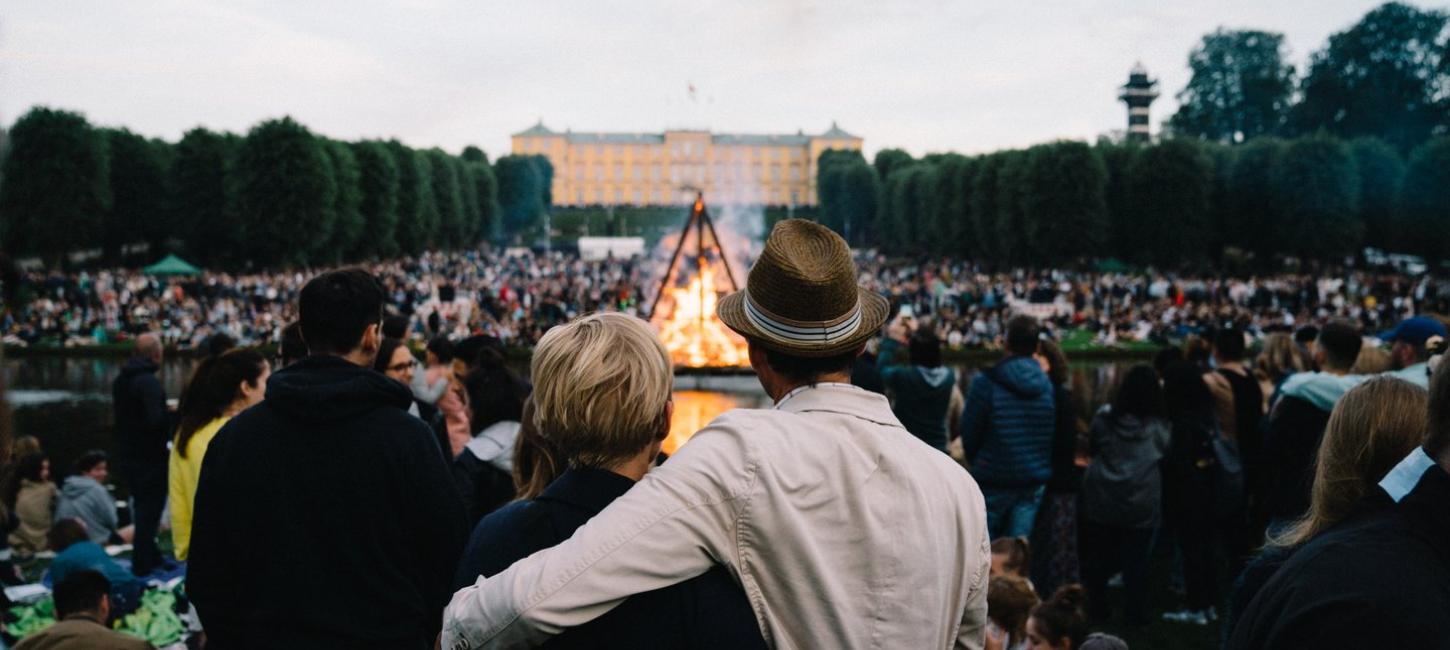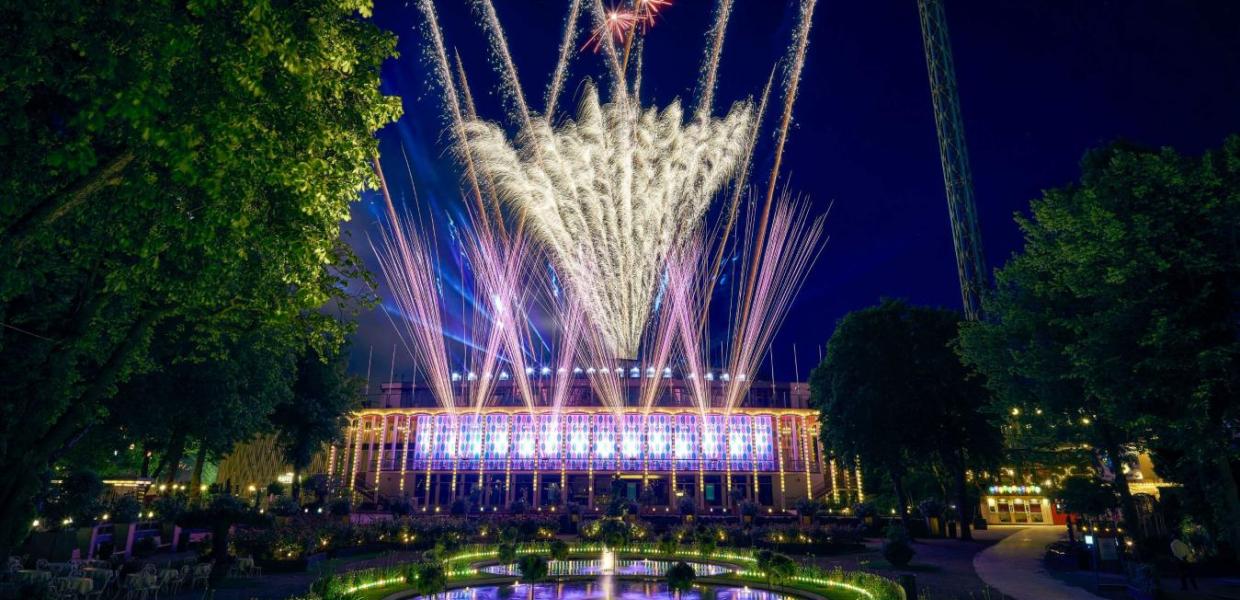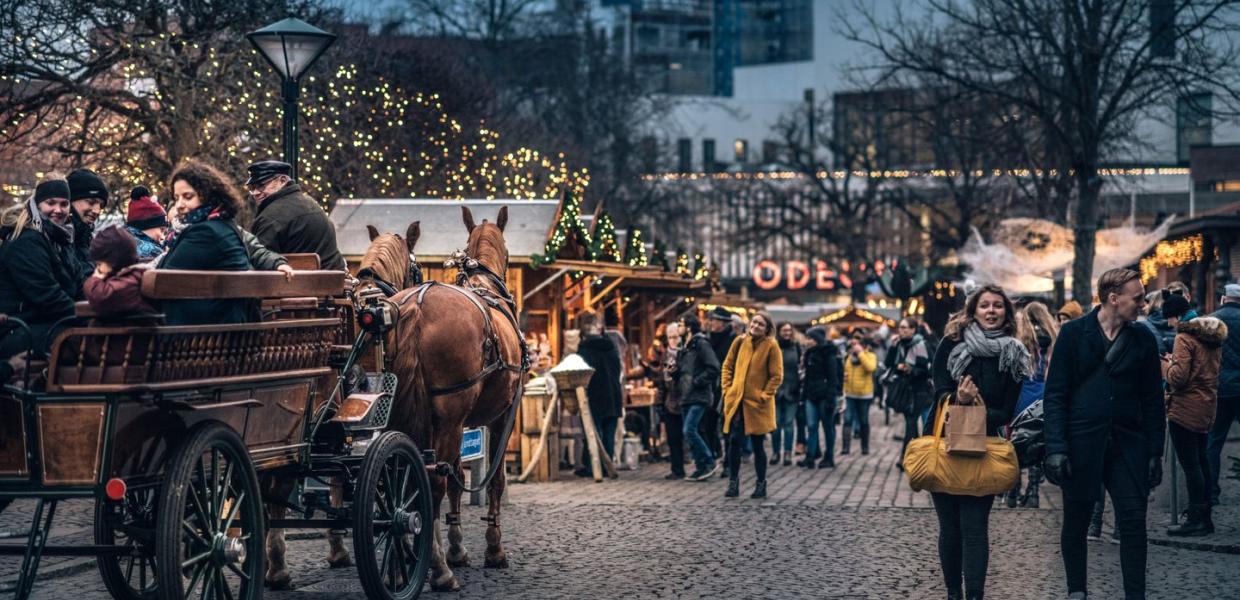11 weird Danish cultural traditions that only make sense to Danes
Every country has its own interesting and often unexplainable traditions…right? While we like to think of ourselves as a modern nation, sometimes you just have to kick back and celebrate like it’s 1549. Here are some of our favourite weird Danish traditions that make perfect sense to us.
1. Jumping into the new year
If you plan to spend New Year's Eve in Denmark, don't be alarmed when you see Danes standing on chairs just before midnight. It's not because we're drunk (though we might be), it's simply an old tradition. We'll be jumping into the new year as the clock strikes 12.
And it's vital that we do it too, because it's supposed to bring bad luck for the entire new year if you forget to jump at midnight. Though you might also say it's not exactly good luck if you end up falling on your face as you try to jump off the chair - not that any of us have ever tried anything that embarrassing...
Join our New Year's celebrations
2. Hitting the cat out of the barrel at Fastelavn
In February, we celebrate Fastelavn which is a mash up of Halloween and carnival. Children dress up in costumes and hit a cat out of a barrel. It's similar to a piñata, though instead of sweets we traditionally had a black cat inside the barrel. But don't worry! We've swapped out the cat for the sweets and simply decorate the barrel with a cut-out version of a black cat. Much better.
3. Our special Easter letters
Our Easter letters (or gækkebreve as we call them) are truly Danish. Since the18th century, young Danes have folded and cut intricate patterns into paper and written short, ryhming poems inside. These are signed with the number of dots corresponding to the number of letters in their name (so if your name is Paul you’d sign off with four dots).
If the recipient guesses who the sender is, they are owed an Easter egg. But! If they can’t figure it out, the recipient owes the sender an Easter egg. With this many chocolate eggs at stake, let’s just say little (and big) Danes take this very seriously. Just one of many quirky Easter traditions, you can see the rest here.
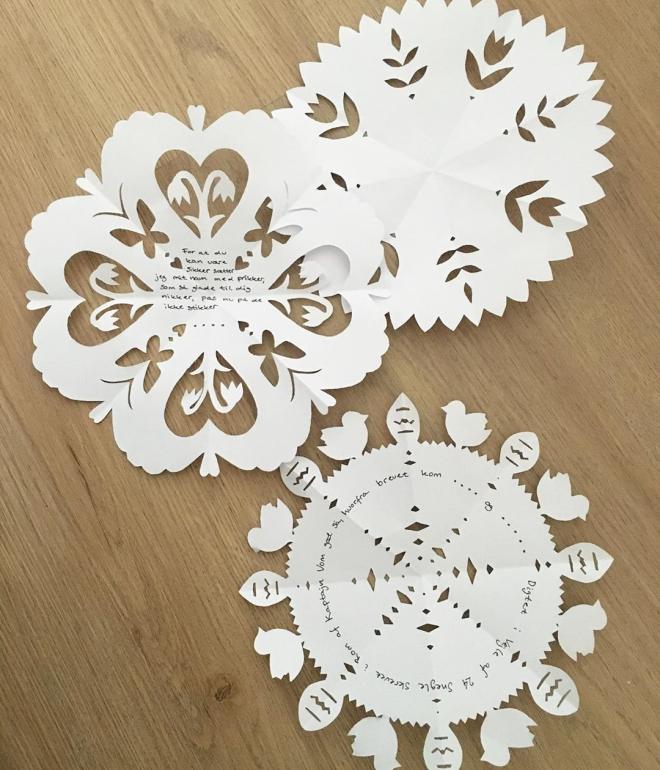
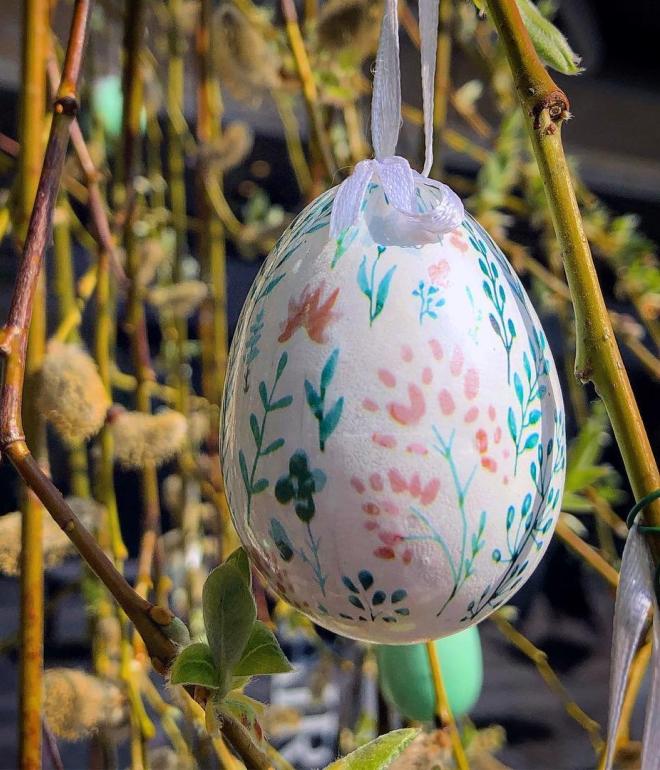
4. Burning a witch on Sankt Hans aften
On the 23rd of June, we celebrate Midsummer by gathering around bonfires up and down the country. We sing songs such as Midsommervisen by Holger Drachmann, and listen to the live bands that usually play at our public events, all whilst enjoying a couple of drinks with our friends. That all sounds lovely right? So where does the witch burning come into the picture?
Started in the Middle Ages, it was a way to ward off witches although, let us quickly clarify we now use a doll. If you listen closely you can hear her 'scream' thanks to a cleverly placed firework. Mordbid? Nah, it's just a little Nordic Noir on a summer eve.
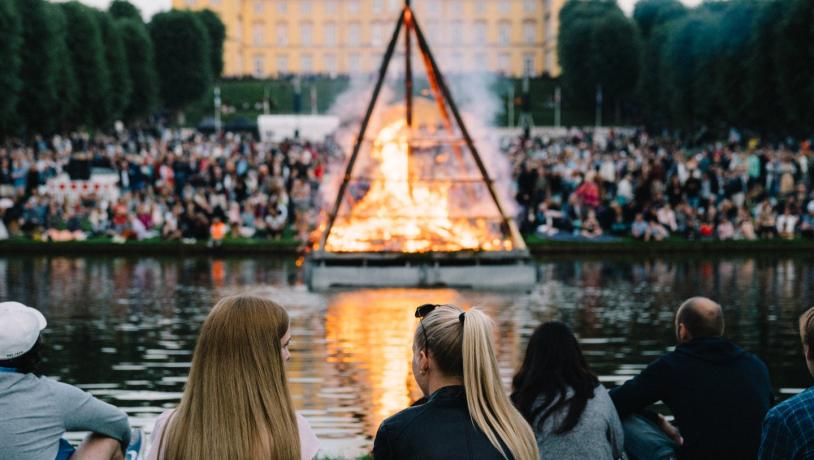
Photo:Morten Svane - Copenhagen Media Center
5. That one week in June where we all want to be high school graduates
If you find yourself in Denmark during the last week of June, you'll most likely run into a bunch of teenagers wearing our iconic student cap. These teens have just graduated high school, and for the following week you'll see a sea of white caps everywhere you go. There are, of course, plenty of different rules about what to write and cut into the caps - stop one of the graduates, they'll be more than willing to explain them all to you!
The most traditional ways to celebrate high school graduation is hard to miss. During the last weekend in June, the streets are filled with large, decorated trucks packed with students dancing, celebrating and playing loud music as the graduates stop by each of their classmates' houses for something to eat and drink.
6. The reason Danes don't want to be single when they turn 25
We celebrate milestones a little differently in Denmark. If we happen to be single on our 25th birthday, we're dragged into the street by our friends who'll cover us head to toe in cinnamon. If we're still single and unmarried by the time we turn 30, we can expect the same treatment. Though this time, the cinnamon i replaced by black pepper. As you do...
7. Danish wedding traditions: The way to a happy marriage
We all love a good kiss, and we expect to see a lot of it on a happy couple's wedding day! And because this is Denmark, we don't just like it, we demand it. When guests stamp their feet the newlyweds have to get under their table and kiss and to get them standing up on kissing each other on top of their chairs, simply start clanging your cutlery on your plates!
But all this kissing is not just between the happy couple. We prefer getting everyone involved. When either one of the couple is out of the room, the guests hurry to kiss the lonely newlywed. Because what else would you expect?
8. Birthday traditions: Happy birthday to me!
Now you might think that when it's your birthday, you're entitled to be the one getting cake, but that's not how we do in Denmark. Whether at school or at work, it's tradition that the birthday child brings sweets or cake. We guess it's a way of sharing the happiness and joy of being the birthday kid.
9. Mortensaften: The evening where we all eat geese
On the 10th of November, we celebrate Saint Martin's Eve (Mortensaften) by treating ourselves to a scrumptious dinner of a roast goose (originally... these days roast ducks are more commonly used), potatoes, and gravy.
Why do we do this you might ask? It all has to do with some French bloke (Martin) who hid in a flock of geese to avoid being named bishop. But the geese betrayed him by flying away, and Martin got his revenge by claiming that every family should feast on a goose on Saint Martin's Eve. He probably could've used some anger management, but instead we gave him a whole evening.
10. J-Dag: The beginning of the Christmas season in Denmark
J-dag (i.e. J-day) is an abbreviation for julebrygsdag (Christmas Brew Day). J-day was introduced by the Danish brewery Tuborg in 1990 to launch that year's Christmas beer and has since become a Danish tradition that more or less kicks off the Christmas season in Denmark.
J-day falls on the first Friday of November every year, and starts at 8:59 PM. Over time, J-day has become a Danish Christmas tradition celebrated in bars and pubs around the country. You can easily join in the festivities, but it might be good to remember that these Christmas beers have a higher percentage of alcohol than regular pilsners. If you forget this important piece of information, you're more Danish that you think.
11. Christmas: The highlight of our winter season
Come December, the days are at their shortest and darkest (in mid-December, we only about seven hours of daylight per day). Thus, the winter celebration has a special place within our culture - even for our Viking ancestors who gathered for the festivities where they ate good food, drank beer and exchanged gifts (sound familiar?).
Did you know that the Danish word for Christmas (Jul) can actually be traced back to our Viking ancestors who celebrated Jól or Yule in the middle of January?
Experience hygge at one of our favourite Christmas markets
Anyhow, we have a never-ending list of traditions when it comes to the Christmas season, so we'll introduce you to a few of them.
The main event: Christmas Eve
First of all, we celebrate Christmas on the 24th of December with our loved ones where we eat a mouth-watering meal of roast pork and duck, boiled potatoes, red cabbage and gravy. This light snack is followed by a rice pudding topped with cherry sauce, and where the main goal is to get the portion that contain a whole almond, the winner will get a present - usually a marzipan pig.
After dinner, we'll head in to the living room to dance around the Christmas tree while we sing carols. Once every one has chosen a carol to sing, we unwrap our presents. As an added little fun fact that always seem to freak people out, we use candles (yes real ones with flames and everything) on our trees. You might ask how we dare mix fire and trees, but the answer is simple - hygge.
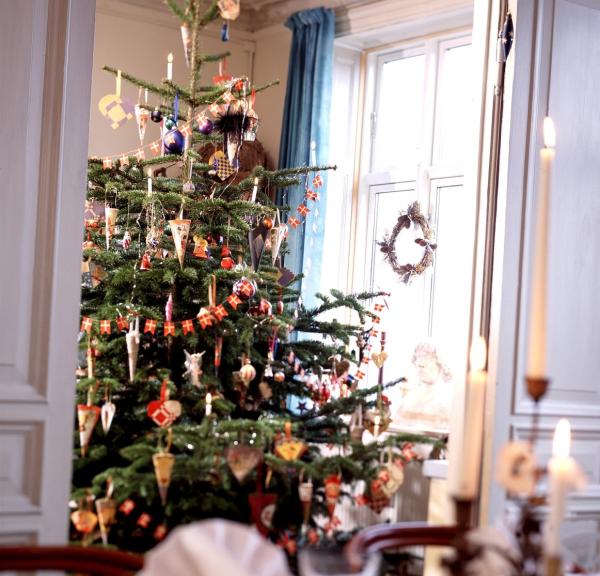
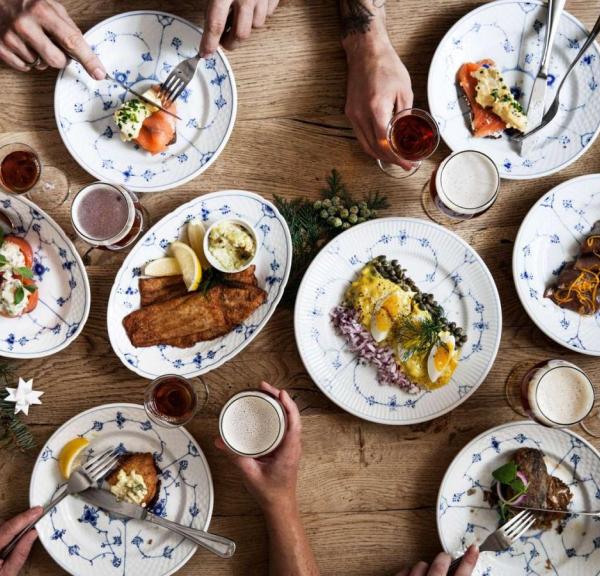
The secret ingredient to most of our Christmas events
Hint: it's food. Food is the big reason for us counting down to the Christmas season. After 11 months, we're finally allowed to break out the old family recipes for our baked goods, such as brunkager and klejner.
We wander through Christmas markets with a glass of mulled wine (gløgg) and a plate of at least three æbleskiver (sweet dough balls served with jam and icing sugar). Our calendars are packed with us attending tons of Christmas lunches with friends, colleagues, and family throughout December (sometimes starting as early as November), where some of our most iconic and traditional dishes (i.e. smørrebrød and snaps) are the stars of the show.
Other well-known Danish Christmas traditions
Keep in mind that the days in December are rather short, and by Danish standards, darkness equals candles. We've already mentioned having candles on our Christmas trees, but we have a few more traditions that (literally) light up our Christmas season. For instance, our advent calendar candle is used for counting down the days until Christmas Eve and celebrating Saint Lucia's Day on the 13th of December with processions (which you can experience all over the country).
